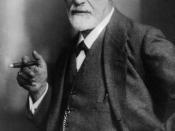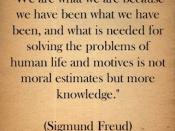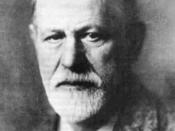One of the key elements of Freud's theory of personality development is conflict, and to understand how these conflicts arise we first have to look at the structure of the personality. Freud believed that personality has three parts, known as the tripartite. Firstly the id, this contains innate sexual and aggressive instincts and is located in the unconscious mind. The id works in accordance with the pleasure principle, with the emphasis being on immediate satisfaction. Then the ego, this is the conscious, the rational mind and it is developed in the first two years of life. It works on the reality principle. It takes into account what is going on in reality and it acknowledges that acting impulsively can hurt us. Then finally the superego, this develops during the phallic stage and it is the child's conscience and sense of right and wrong. It is formed when the child adopts many of the values of the same sex parent.
It is said that there is conflict between the three parts.
Evidence into the tripartite personality is Solms, who used PET scans to provide support for the concept of the id and the ego. During REM sleep the rational part of the brain is inactive and Freud's theory would say that the ego does indeed become suspended while the id is active during dreaming. But the activation synthesis study disagrees with this evidence. This then shows on the whole that there is evidence that there are three different parts in the brain as there are different parts active at different times.
The ego has a difficult time dealing with the conflict between the three parts of the personality and therefore it uses defence mechanisms to protect itself and reduce anxiety. Some of the main defence mechanisms are repression: this is were...



Great
This essay just summarizes Freud's theories in the shortest and understandble way that any beginers could understand. Thank you.
2 out of 2 people found this comment useful.